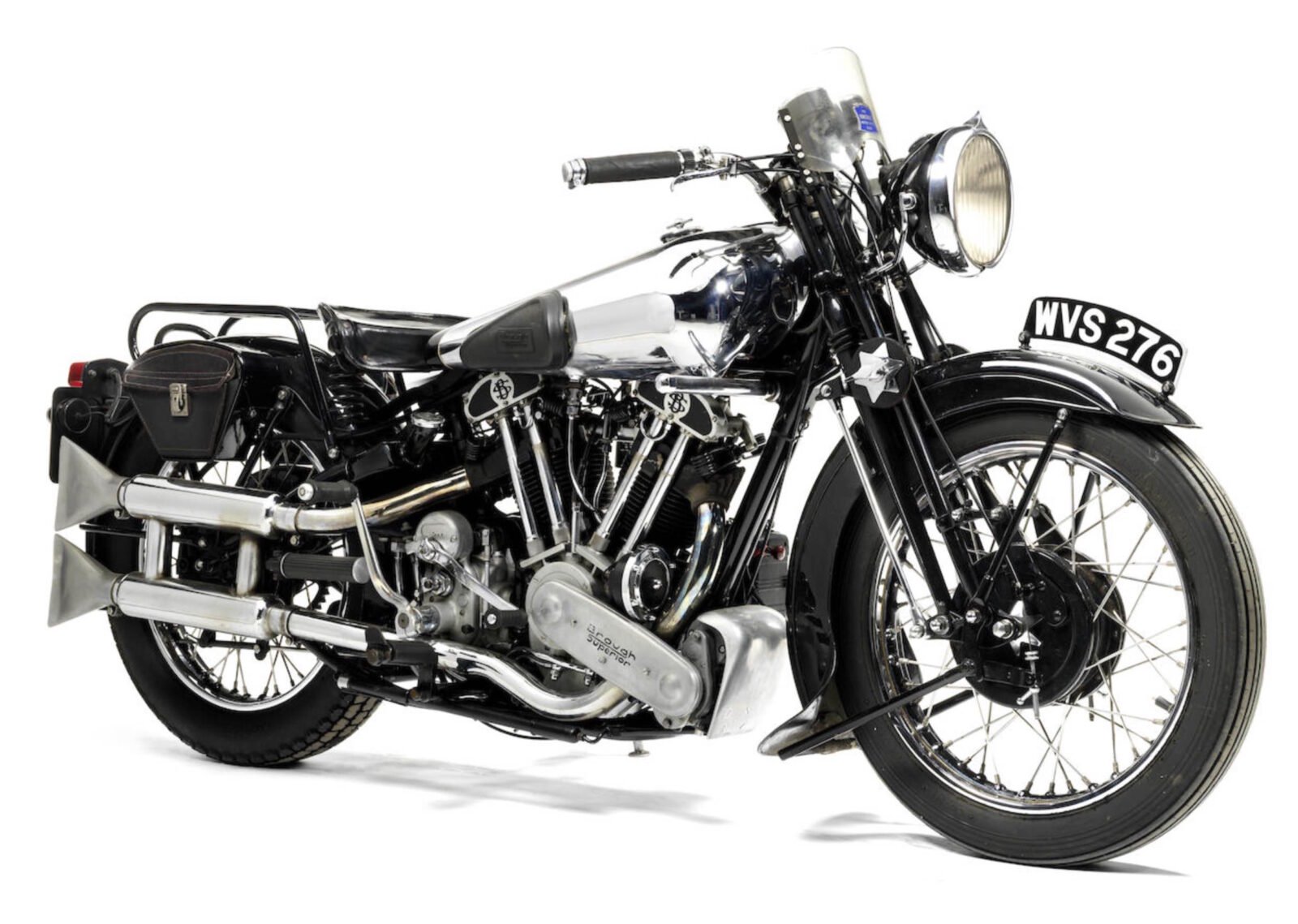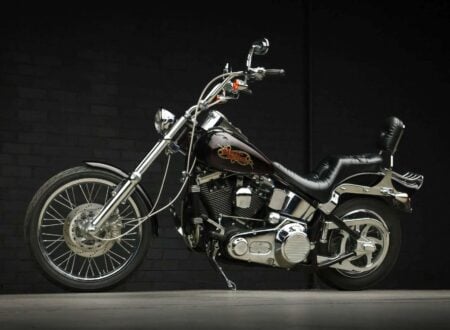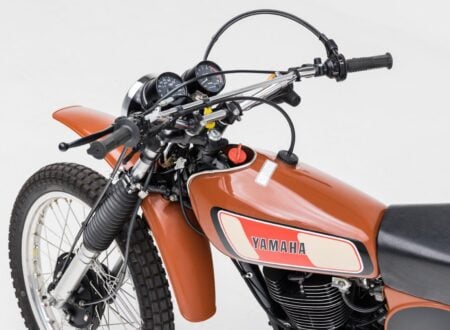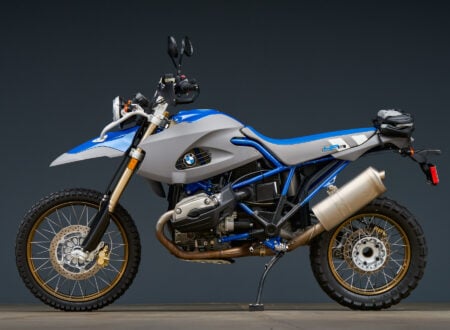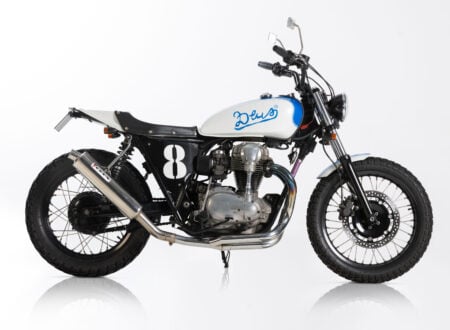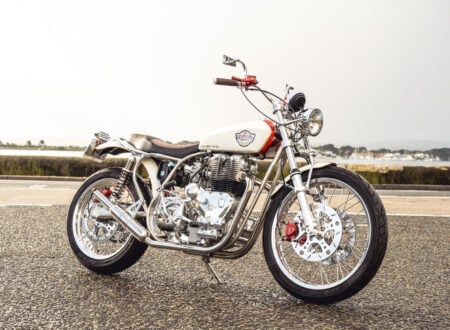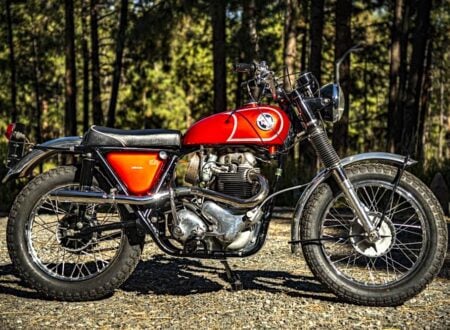A Motorcycle Superior to All Others
George Brough was a man who had a love of motorcycles and a social intelligence that enabled him to put his finger on the pulse of what would be attractive to Britain’s upper classes. This meant he was able to offer them a niche product that would sell well, despite being highly priced.
In the 1920s and 1930s British society was still very class conscious, something that the country has retained even until the present day. So George Brough set out to create not only a motorcycle that was actually superior to all others, but one that would be a fashion statement for his wealthy clientele. He set out to create the motorcycle equivalent of the Rolls-Royce, and he succeeded.
Brough Superior – No Humble Beginnings
George Brough’s father was William E. Brough and he had been in the motorcycle making business since 1908. This provided the young George Brough with a considerable knowledge and expertise base with regards to motorcycles, their use both as transportation and in competition, and their design and manufacture.
He worked in his father’s business and had begun in motorcycle competition when he was still at school in 1906. He won the London to Edinburgh and Back Trial three years in a row; 1910, 1911, and 1912, completing that last year by winning a Gold Medal and prize for best performance in the 1912 Scottish Six Days Trial using a single gear with no clutch and with sealed tool bags. So George had built for himself a well established name in motorcycling circles.
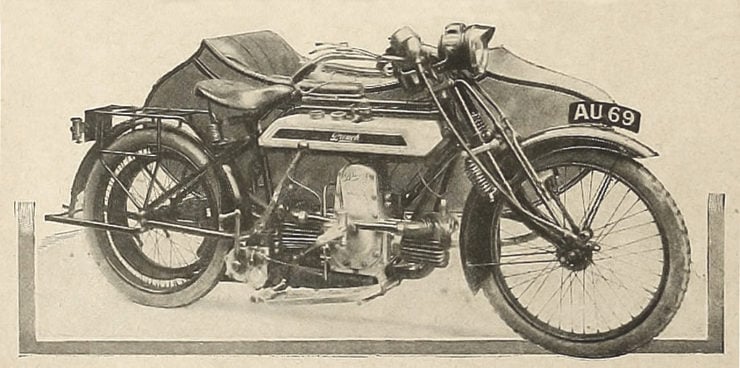
Above Image: A Brough (not Superior) motorcycle
As it turned out George and his father had an argument in 1919 and it proved to be sufficient for George to make the decision to leave his father’s business and set up a motorcycle manufacturing business of his own, which he did that same year. George and his father William had quite different views on what would be the best strategy to prosper a motorcycle manufacturing business.
William it seems had a penchant for flat tanks and the horizontally opposed twin cylinder engine much as used by British motorcycle maker Douglas. George on the other hand wanted to embrace the modern style of motorcycle powered by a large capacity V-twin: something like a Harley-Davidson but with extraordinary attention to handling and quality control to go with the power. In a sense George wanted to build bikes that were in some respects like the Harleys and the Indians, but aimed at the “Rolls-Royce” top end of the market.
It’s important to note that at this time Indian and Harley were building somewhat different motorcycles to what they make today. The Indian Motorcycle factory team took the first three places in the 1911 Isle of Man TT and both companies built board track racing V-twin motorcycles capable of over 100 mph – a heady speed in the 1910s.
Brough Superior and “Brough Inferior”
George began his business with a determination to build motorcycles that were “superior”, not only to his father’s machines but superior to every other motorcycle being made: when told that George was going to call his motorcycles “Brough Superior” his father William stated “I suppose that makes mine the Brough Inferior!”
Notwithstanding the family rivalry George was provided with £1,000, his share in the family business and he invested that in purchasing a suitable piece of land in Haydn Road, Nottingham, and on erecting a single story workshop on it.
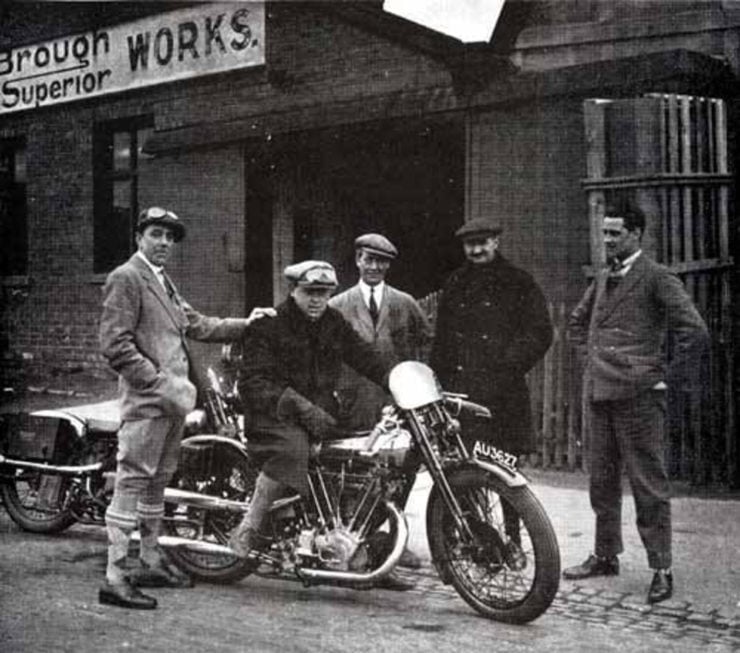
Above Image: The Brough Superior works, George Brough is on the far left.
In 1919 George made his first Brough Superior motorcycle and then, in time for Christmas of 1920, began offering a model that was purpose designed to stand out from everything else on the market. This first Brough Superior was handmade, like a Rolls-Royce, bespoke, like a London “best” gun or double rifle from the likes of Purdey or Holland & Holland. This was a motorcycle created to appeal to the wealthy upper class, and made to become a fashion icon, having a 1920’s “coolness factor” even before the notion of “cool” was invented.
Its important to mention at this point that George Brough had well developed mature ideas as to what an ideal motorcycle should be: he had been riding in competition since 1906 and had learned a great deal both from experience and from talking with various competitors and makers, so his thinking was well developed. This meant that he had a strong knowledge base and expertise foundation on which to design his own machines. He built the motorcycles he would want to ride. He did not employ “market research”, he already knew what a truly great motorcycle should be whether the market wanted it or not. So he did not follow fashion, he set the fashion and left others in his dust to imitate and try to catch up.
He was fond of quoting from Rudyard Kipling’s “The Mary Gloster”
“They copied all they could follow
But they couldn’t copy my mind
And I left ’em sweating and a’stealing
A year and a half behind.”
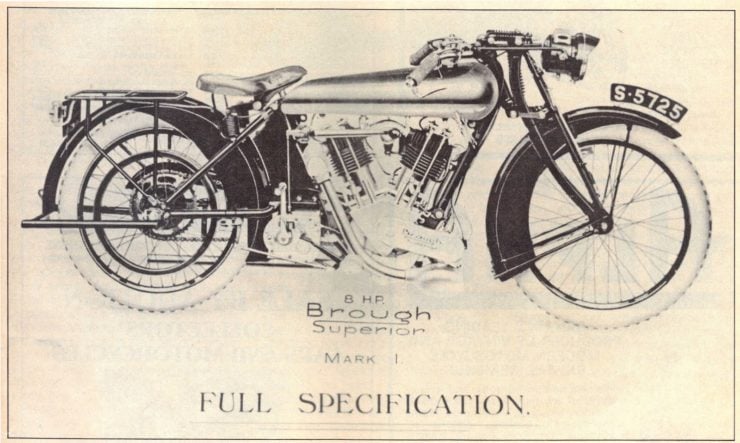
George Brough’s first Superior motorcycle followed the design specification he would keep close to throughout the two decades of manufacture. The main engine offering of this first model was a V-twin 986cc OHV JAP (J.A. Prestwich) as were used on a number of other rival motorcycles: the 1921 Coventry Eagle would follow this pattern for example. The JAP engine breathed through an Amac carburetor and was given its spark by an ML magneto.
George Brough had not yet completely settled on the JAP V-twin at that point however and also offered the unusual Barr & Stroud V-twin sleeve-valve engine of 999cc capacity. Although a sleeve-valve engine might sound like a curious option it is worth remembering that the exotic and prestigious Avions Voisin luxury cars of the 1920’s were using sleeve-valve engines because of their silence in operation. In addition to this Brough also offered the Swiss Motosacoche (MAG) IOE engine (Inlet Over Exhaust, which has an overhead inlet valve and a side exhaust valve: otherwise known as an “F” head) in either 733cc or 993cc: a Swiss engine could be sold on the idea that it was “made like a Swiss watch”. The gearbox was a three speed Sturmey-Archer and the bike’s tube steel frame was fitted with Montgomery front forks.
Over the period from 1919 up until 1922 George Brough’s business was still finding its feet and making a name for itself. Various models were made and offered including OHV and side-valve versions of his Mark I, Standard and Sports models of his Mark II, an OHV 500cc, a side-valve 680cc Junior, and a 750cc side-valve.
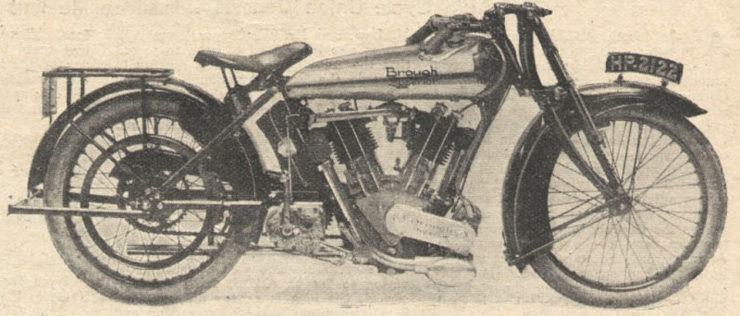
The observant will already have noticed that George Brough was using major components from other manufacturers, as were most of his lower priced competitors. What then was his justification for the high price of his motorcycles, how did he sell the idea that his bikes were indeed “Superior”?
George Brough was skilled at marketing and he put the effort in to have his parts made to special order, and would go to the extreme of assembling a motorcycle twice; the first build for testing and ensuring all parts fitted perfectly, then the bike was stripped down, painting and parts plating would be done, and it would be finally assembled and tested. His big selling point was superiority in quality control. Just as when you went to Rolls-Royce for a car, or James Purdey & Sons for a gun you knew you were getting the best that money could buy, that no expense had been spared in making it as close to perfect as human engineering can accomplish.
Enter the Brough Superior “Super Sports” Models
It had not been long after he set up his business that George Brough got to work on his ideal motorcycle, the bike that was to become his “Super Sports” model. In his development work he built a very lightweight low framed bike, and installed it with a JAP side-valve in a high state of tune.
He named it “spit and polish” (because he kept it spotlessly clean and polished) and took it to Brooklands where he proceeded to lap the circuit at over 100mph making this the first side-valve motorcycle to accomplish such a feat. Having won a five lap race he got going in a subsequent race but his front tyre parted company with the rim while he was going flat out with the result that George and the bike parted company and George reputedly set a new Brooklands record: that for the furthest slide on one’s backside. Happily for George it was the tyre that failed, not the bike, and he was able to walk away from the crash: as pilots say “Any landing you can walk away from is a good landing”.
Undefeated, and now just a bit more famous, George built another even lighter bike, a bike so lightly constructed it needed external struts from ahead of the crankcase to the rear spindle to ensure it would not bend under engine power when the throttle was opened up. The little beast was nicknamed “Old Bill” after Bruce Bairnsfather’s cartoon character of the First World War.
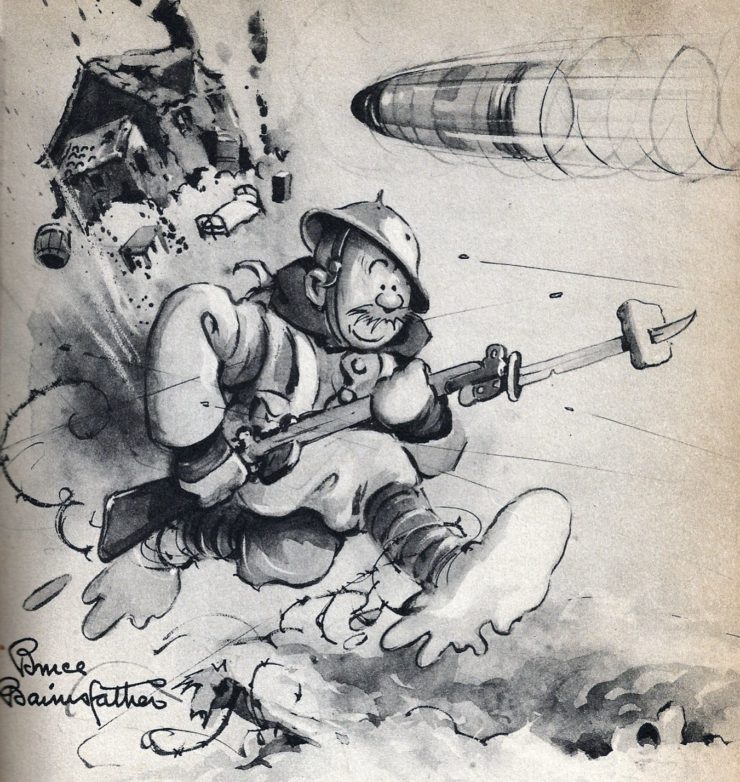
The racing bikes served the purpose of making Brough Superior into a household name and helped launch the first of the production series, which was ready for production by 1922 and was introduced to the public as the Brough Superior SS80, the “80” denoting that it was guaranteed to achieve or exceed 80mph. Brough had his own in-house test riders who would take each machine out and ensure that it would make its advertised speed in a quarter mile.
The SS80 was powered by a side-valve 988cc/60.3 cu. in. JAP V-twin engine and was made in standard and “De Luxe” versions. The De Luxe SS80 featured rear suspension which was in some ways similar in concept to that which would be seen on the Vincent motorcycles of 1927 onwards.
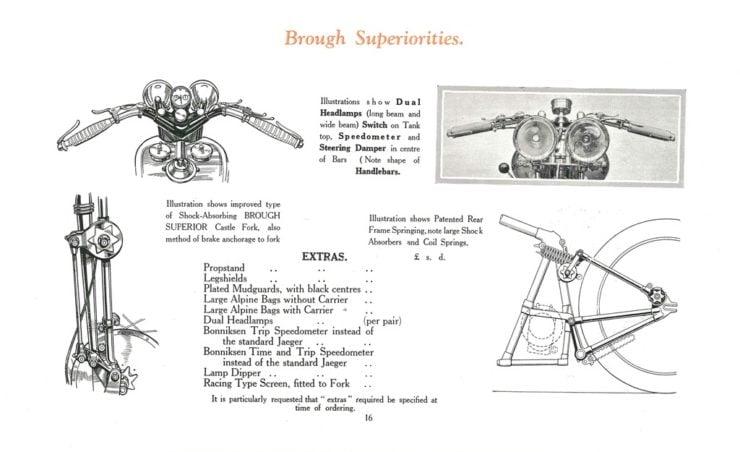
But the SS80 was not to be the last word in Brough Superior motorcycles: Brough knew that 80mph was not going to be enough to keep up with the competition and thus that he would need to create a model guaranteed to be able to do “the ton” or 100mph.
It was in 1923 that motorcycle journalist H. D. Teague of “The Motorcycle” did a road test of an SS80 and in his article described it as “The Rolls-Royce of Motorcycles”. This was one of the nicest accolades George Brough could have hoped to receive and he promptly began to use it in all his advertising, although being careful to attribute the quote just in case the gentlemen at Rolls-Royce decided to get upset about it.
As it turned out the gentlemen over at Rolls-Royce were a bit miffed and let George Brough know of their discontent. George invited them over to have a look at how Brough Superior motorcycles were made and on the day of their visit the workshop was immaculate, and the Rolls-Royce men were greeted by the sight of nice young men in clean white coats building these “Rolls-Royce of motorcycles” with meticulous care. The Rolls-Royce men were so impressed that they said that George was welcome to refer to his bikes as “The Rolls-Royce of motorcycles”, and so he did.
The Brough Superior SS100
It was a combination of three men, George Brough, engine designer Val Page, and Swiss motorcycle racer and engine tuner Bert le Vack, who’s talents came together to create the next and greatest of the Brough Superior motorcycles. At this point in history, for four years in the early to mid 1920’s, le Vack worked with Val Page at JAP to build a large capacity V-twin, an engine to beat the American V-twins from Indian and Harley-Davidson. While Val Page was the engine designer le Vack was a tuning and fuel blending expert. The project was to build a “Yank Buster” V-twin engine with overhead valves. The resulting 1924 JAP 8/45 was a 986cc OHV V-twin which was tuned by le Vack to become the JAP “Super Big Twin”.
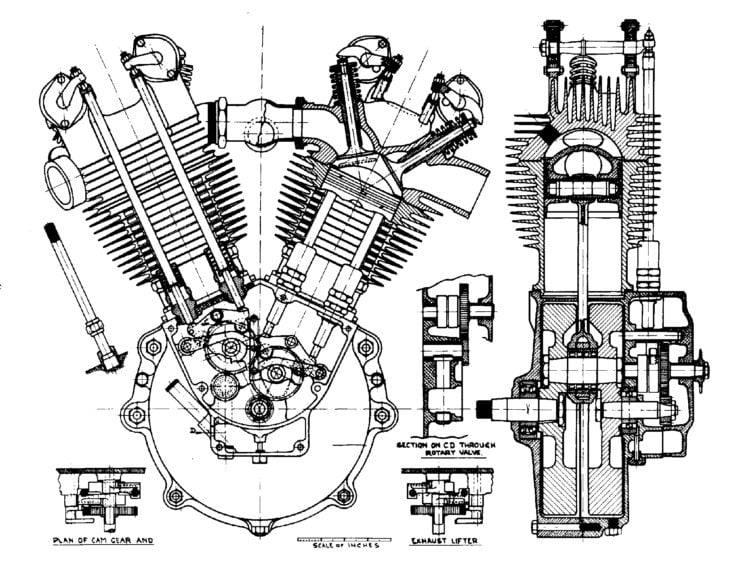
In 1924 Bert le Vack and George Brough put together a motorcycle around a specially tuned 867cc JAP OHV “Super Big Twin” engine. The bike was fitted with parts from other suppliers as were Brough Superior bikes generally including front forks that were straight out of a Harley-Davidson.
In order to ensure this bike would stand out as a Brough Superior George Brough ensured its was fitted with the trademark Brough Superior fuel tank so there was no mistaking what bike it was. This bike was taken by le Vack up to a crisp record breaking 118.93mph at Arpajon. George Brough now had an engine at his disposal that could propel a Brough Superior to at least 100mph, the SS100 was born.
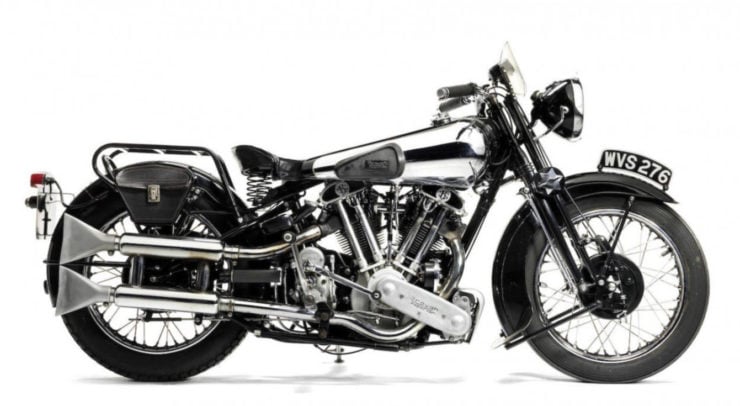
George Brough worked on the SS100 prototype to ensure it was a bike that would handle and stop well. To this end the front and rear brakes were upgraded to drums with decent stopping power. The resulting motorcycle was a work of visual art as well as being one of, if not the, best handling and fastest motocycle’s the world had seen up to that point in history. The SS100 made its debut in the 1925 Brough Superior catalog and was described as being “an exact replica of the Brough Superior ridden by H. le Vack when capturing 9 world’s records including the fastest speeds ever accomplished on a motor cycle – 123 m.p.h. SOLO and 103 sidecar.”
Once the SS100 was established George Brough decided to try his hand at a world speed record. George got together with a man named Freddie Dixon and between them they built a special purpose SS100 on a shortened frame with the newest long stroke JAP V-twin. Freddie Dixon took it for an outing at Brooklands and managed 103mph for five miles. George then took the bike to Arpajon in 1928 to see what he could accomplish. He almost succeeded: he managed a one-way run of 130mph, making him the fastest man on two wheels, but on the return run a piston failed bringing his record breaking to an unexpected end, because to officially obtain a world record a two way run was required. The bike was taken back to Britain and re-built, and then Bert le Vack took it back to Arpajon the following year and achieved a two way run of 129mph, and a new world record.
Brough Superior SS100 – Models and Specifications
The Brough SS100 was offered in three main models; the SS100, the SS100 AGS “Alpine Grand Sports”, and the SS100 “Pendine”. All were fitted with JAP engines up until 1936 when Brough progressively made the switch to Matchless engines. JAP engined bikes continued to be made up until 1938.
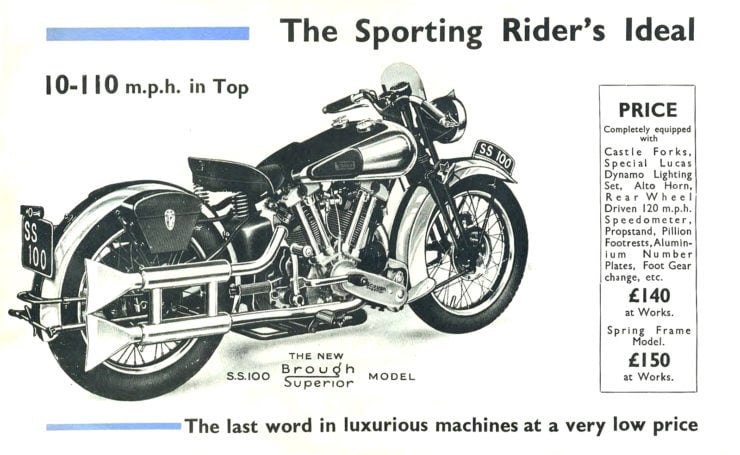
The Brough Superior SS100 was fitted with four stroke, four camshaft, JAP OHV 50° V-twin engines from 980cc up to 996cc capacity depending on model variant. As all Brough Superior SS100 bikes were made bespoke to customer order there are many variations possible and it has been said that no two were identical. When a customer came in to order a Brough the process was very much like that experienced by a customer who went to one of London’s “best” gunmakers. The customer was measured as if for a custom gun or Saville Row suit. The shape, length and position of the handlebars and controls were custom fitted to the customer so the bike would feel as if it fit them “like a glove”, because it was made to do so. Other options included such things as an unsprung or sprung frame and various other fitments.
Three main variants of the engine were the JAP 980cc 8/45, the 996cc JTOR-JAP 8/50, and the 996cc JTOS-JAP 8/75 which was fitted to the SS100 Alpine Grand Sports beginning in 1934. The JTOS-JAP 8/75 was known as the “two of everything” because it was fitted with two magnetos and two oil pumps. The use of dual systems was quite common in the highest quality motor cars of the 1920s and 1930s and so such use in the Alpine Grand Sports provided it with an even higher degree of fail-safe reliability. The SS100 engine was mated to a “four stud” three speed Sturmey-Archer gearbox with chain final drive up until 1935 when the change was made to a Norton four speed gearbox.
The frame of the SS100 was a duplex cradle type with the option of either unsprung rear or a Deluxe model fitted with Brough’s patented sprung rear suspension. The front forks were Brough’s modified Harley-Davidson style Castle forks which he had patented in collaboration with Harold “Oily” Karslake.
Every SS100 came with a written guarantee that it had been ridden and tested to confirm it would do 100mph, for a period Bert le Vack was involved in tuning customer’s motorcycles and is known to have worked on some of “Lawrence of Arabia” T.E. Lawrence’s Broughs.
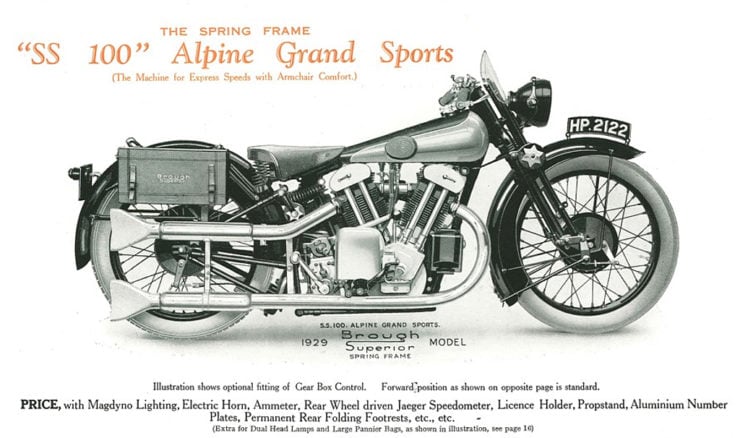
The model up from the standard SS100 was the SS100 “Alpine Grand Sports”. This bike was named after the Austrian Alpine Eight Days Trial and for the year of the SS100’s debut, 1925, George Brough along with Freddie Dixon and Austrian Champion Eddy Meyer competed on Brough Superior SS100’s.
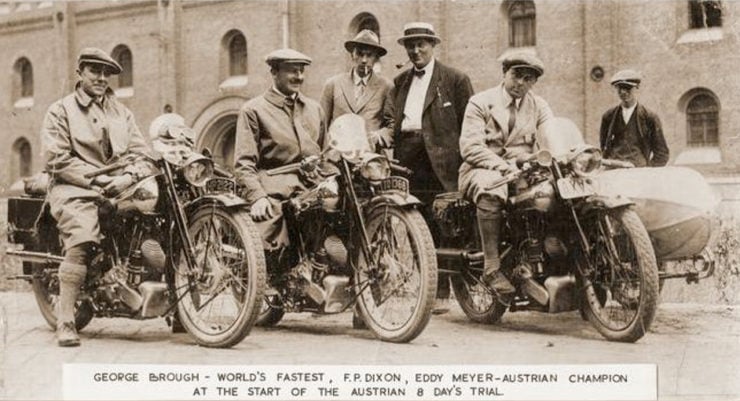
The result of the 1925 Austrian Alpine Trial proved to be most satisfactory for Brough Superior with them winning no less than six cups including the one for “Best Performance”. The SS100 Alpine Grand Sports was fitted with a lower compression ratio engine to ensure it would happily cope with the variable quality of fuel that would be encountered while touring in the 1920s and 1930s: but these bikes were still guaranteed to be able to meet or exceed 100mph in a quarter mile.
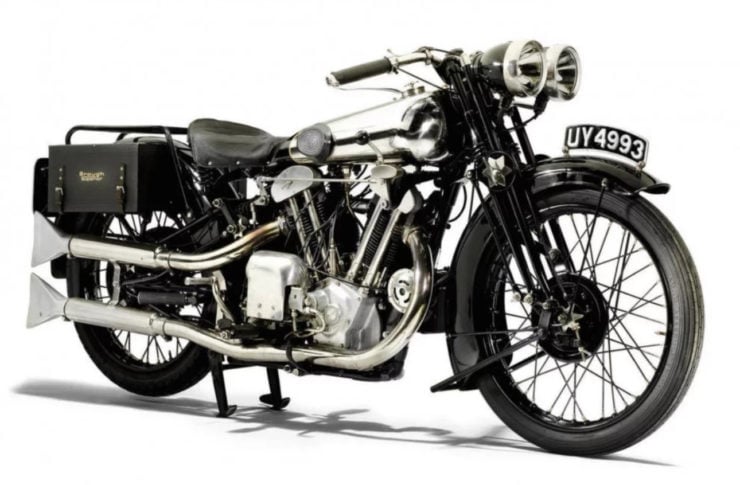
The SS100 Alpine Grand Sports was offered with a number of optional extra cost fittings such as dual headlights and large pannier bags, but the sprung rear suspension was a standard fitting on this model as was a small fly screen and a pair of tool boxes.
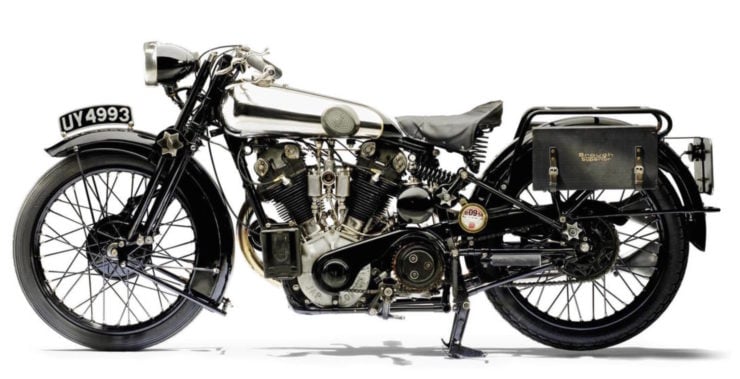
The model of the SS100 for those looking for speed was the SS100 “Pendine”, named after Pendine Sands in Wales. Pendine Sands was a seven mile beach that provided a hard and almost perfectly flat surface better than many of the roads of the 1920’s. Pendine Sands was used as the track for the Welsh TT motorcycle trials from 1922 onwards and was also the site used by Sir Malcolm Campbell for his successful land speed record attempt in his 350hp Sunbeam record car “Bluebird”, in which he attained 146.16mph/235.22km/hr.
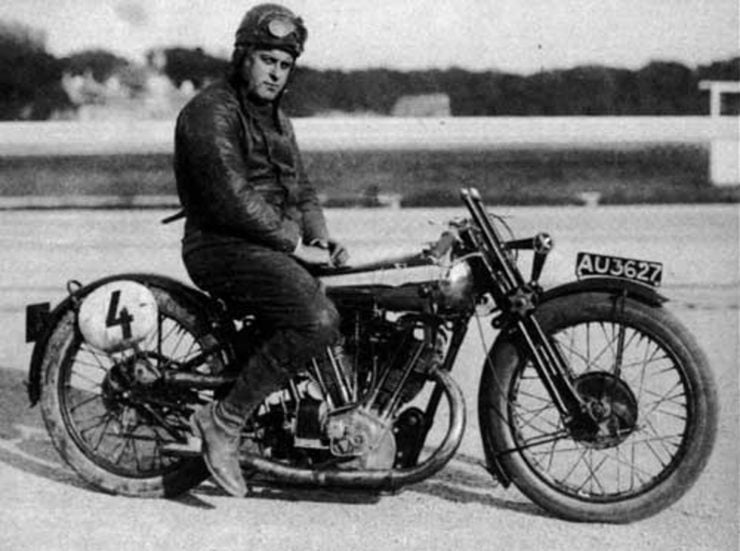
The SS100 Pendine made its debut in 1927 and was normally fitted with a rigid frame (no rear suspension), lightened for racing, typically with no lights, and with an engine in a higher state of tune with a high compression ratio that would require blended racing fuel. Each Pendine model was guaranteed to achieve 110mph in a quarter mile.
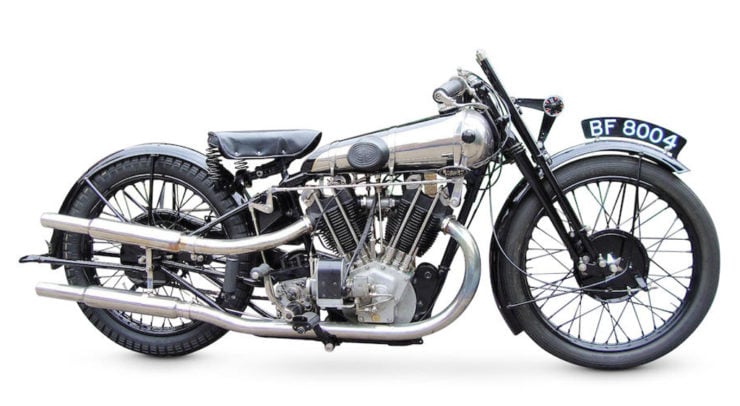
The standard engine for the SS100 Pendine was the 981cc JAP KTOR 8/45 twin cam engine with bevel drive magneto. Other engines were used however, the largest of which was an 1,150cc twin carburetor bike made to order for Eddy Meyer in 1927: the larger engine being permitted under racing rules in Austria where Meyer competed with that bike. A common engine for the Pendine was the 996cc JAP JTOR 8/50 producing 73hp @ 6,200rpm.
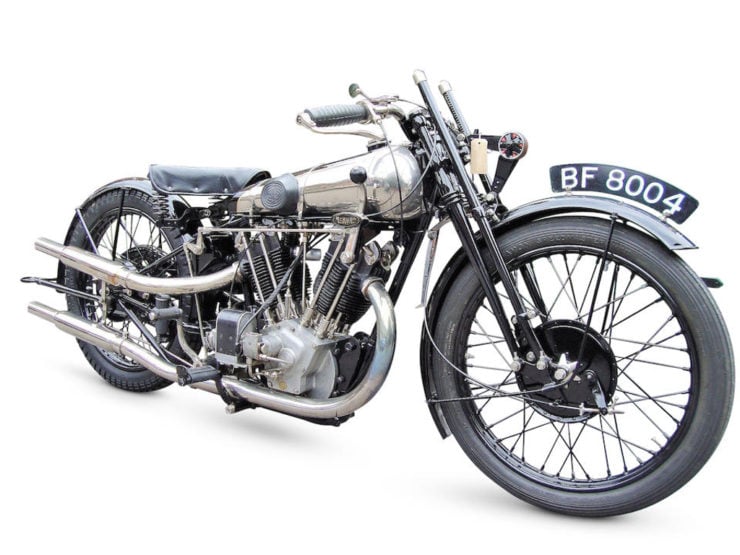
The Arrival of Vincent HRD, and the Final Version of the SS100
By the time the SS100 had been in production for ten years other motorcycle makers had not been idle. With the establishment of Vincent HRD in 1928 another visionary motorcycle designer, Philip Vincent, entered the scene and he was not one who was going to be playing catch up with George Brough, quite the reverse.
Vincent started out building motorcycles using Phil Vincent’s patented cantilever rear suspension with conventional girder front forks and he used JAP engines predominantly much as George Brough had done up until 1934. In that year Australian engineer Phil Irving joined the company and designed a new engine, resulting in Vincent making their own 500cc single cylinder engines. By 1936 Vincent had created their own in-house 998cc OHV V-twin engine and installed it in a motorcycle so advanced that it would take decades for others to catch up: the Vincent Rapide.
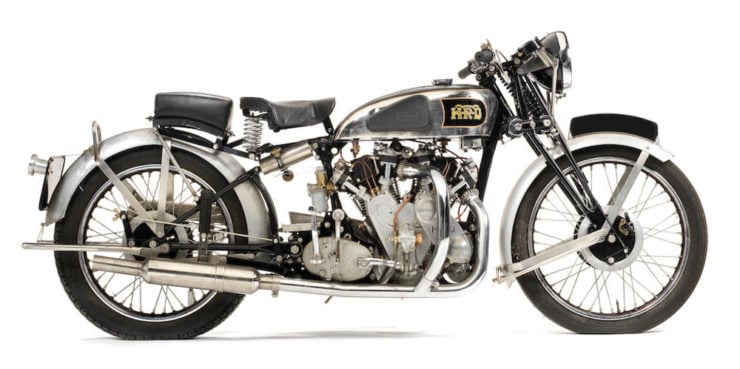
By comparison with the Brough Superior SS100 the Vincent Rapide boasted dual drum brakes front and rear as opposed to the Brough’s single drums, a superior suspension to go with its superior brakes, and a superior engine. The Vincent was built to just as high levels of quality control as the Brough which was not looking superior anymore.
That first Vincent Rapide engine featured external oil lines which led the motorcycle press to dub it “The plumber’s nightmare” and George Brough may have breathed a sigh of relief at that. But we suspect that with the arrival of the Vincent Rapide of 1936 George Brough realized that he was at risk of not being in front of the competition anymore, and that he would have to stop using his favourite Rudyard Kipling quote unless he could come up with a motorcycle that would be superior to everything else once more.
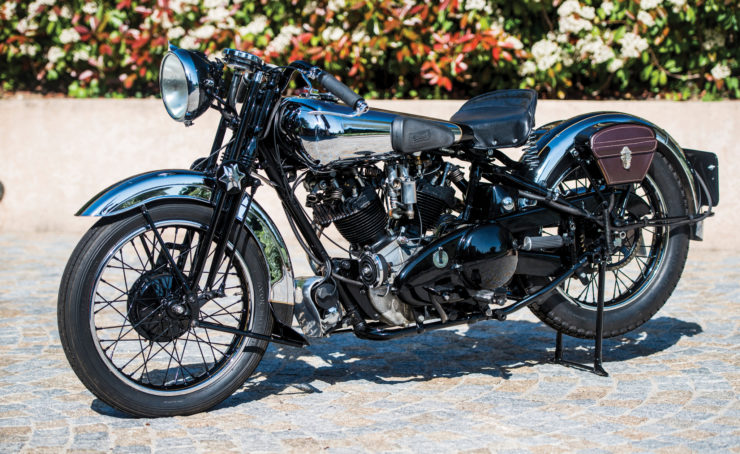
The 1935 Brough Superior SS100 made the move to a new engine, the 1,000cc Matchless V-twin OHV V-twin with a Norton four speed gearbox, but in other respects it was still faithful to the 1924 original. Only 102 of this last model SS100 would be built.
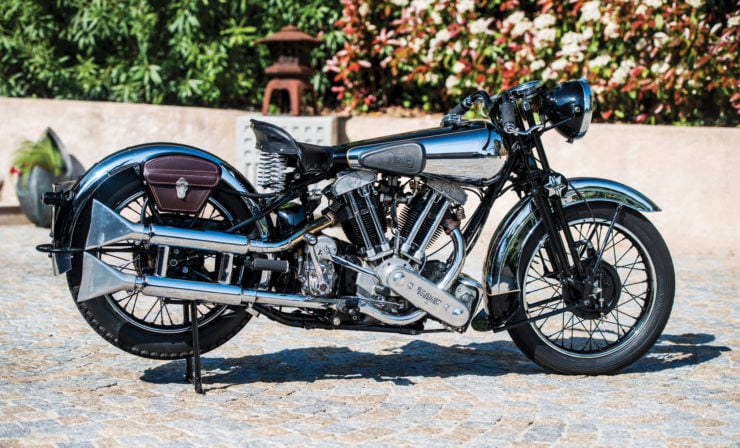
George Brough turned his attention to creating a motorcycle that would be superior to everything else once more and in 1938 unveiled his “Golden Dream” at the London Earls Court motorcycle show. The Brough Superior Golden Dream was powered by an “H” engine, which is essentially two horizontally opposed twin cylinder engines stacked one on top of the other with their crankshafts connected together by gears, this having the effect of providing perfect engine balance as the upper and lower banks of cylinders are counter-rotating. This 988cc engine was mated to either a three or four speed gearbox and shaft final drive.
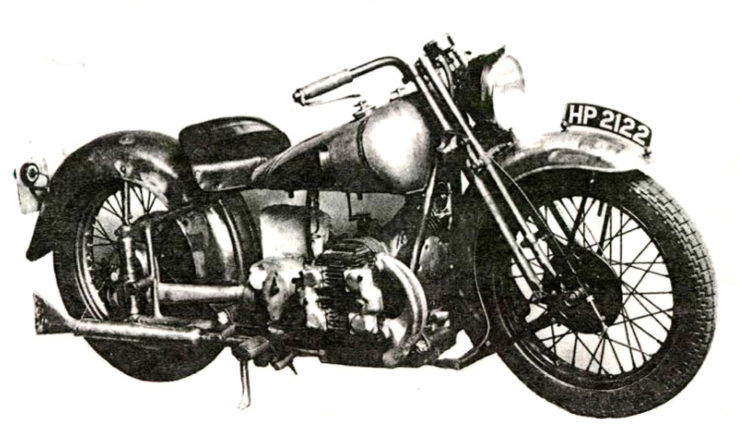
The frame of the Golden Dream was essentially that of an SS100 but with Brough’s own version of a cantilever rear suspension replaced with a plunger type, while at the front he kept his familiar Harley-Davison-based Castle forks. It would prove to be an expensive failure and was not put into production.
The End of Brough Superior SS100 Production
By 1939 both George Brough and Phil Vincent were forced to turn their wonderfully creative minds away from building superior motorcycles because of the antics of a German with a Charlie Chaplin moustache who somehow managed to persuade the German people to give him absolute power. Lord Aston warned us that “All power tends to corrupt, and absolute power tends to corrupt absolutely” but perhaps because Lord Aston was British the German people did not take notice of his warning, but the British did. The result was World War II and Brough Superior found themselves making crankshafts for beautiful Rolls-Royce Merlin engines while Vincent were tasked with making munitions. The last ten Brough Superior SS100 bikes were made in 1940, and after that there would be no more.
By the end of the war in 1945 both George Brough and over at Vincent both Phil Vincent and Phil Irving, had been thinking about what they would create for the new post-war era. At Vincent the decision was taken to perfect the Rapide and improve on it which resulted in the creation of the Vincent Black Shadow, arguably the world’s first “superbike”, and a bike that was advertised as “the fastest motorcycle in the world”, and that it was.
George Brough took a different route and claimed that he could not find a suitable engine for his SS100, and so had to cease production. But perhaps there’s a story behind that claim: there of course was a British V-twin engine that would have been perfect for the SS100, and that was the Phil Irving designed Vincent V-twin that would power the post-war Rapide, Black Shadow, and Black Lightning. Vincent would very probably have been willing to build and supply engines for Brough Superior, they were willing to make engines for American motorcycle manufacturer Indian and built them a prototype. But George Brough knew that Vincent actually had the superior motorcycle and thus he could not admit defeat and get his engines from them. Instead he decided not to resume motorcycle production, and so the history of one of the most famous of all the motorcycles to emerge from Britain quietly ended.
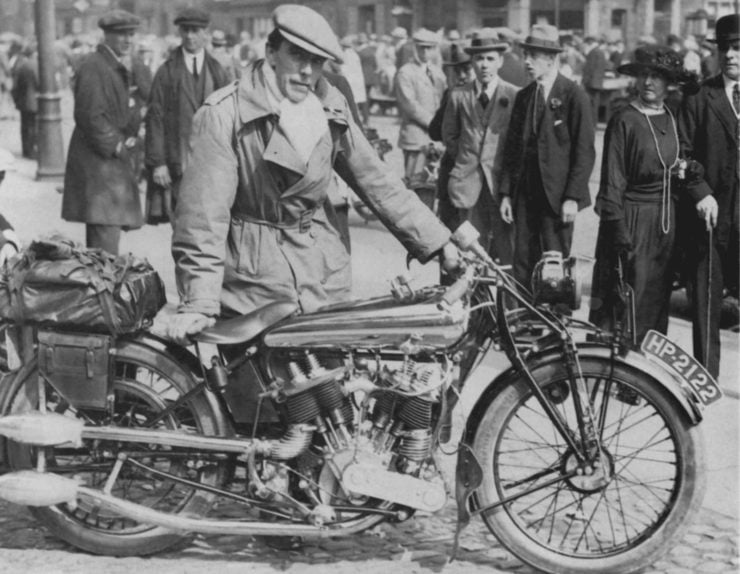
Above Image: George Brough
Picture Credits: Brough Superior, Bonhams, RM Sotheby’s, JAP.

Jon Branch has written countless official automobile Buying Guides for eBay Motors over the years, he’s also written for Hagerty, he’s a long time contributor to Silodrome and the official SSAA Magazine, and he’s the founder and senior editor of Revivaler.
Jon has done radio, television, magazine, and newspaper interviews on various issues, and has traveled extensively, having lived in Britain, Australia, China, and Hong Kong. The fastest thing he’s ever driven was a Bolwell Nagari, the slowest was a Caterpillar D9, and the most challenging was a 1950’s MAN semi-trailer with unexpected brake failure.

